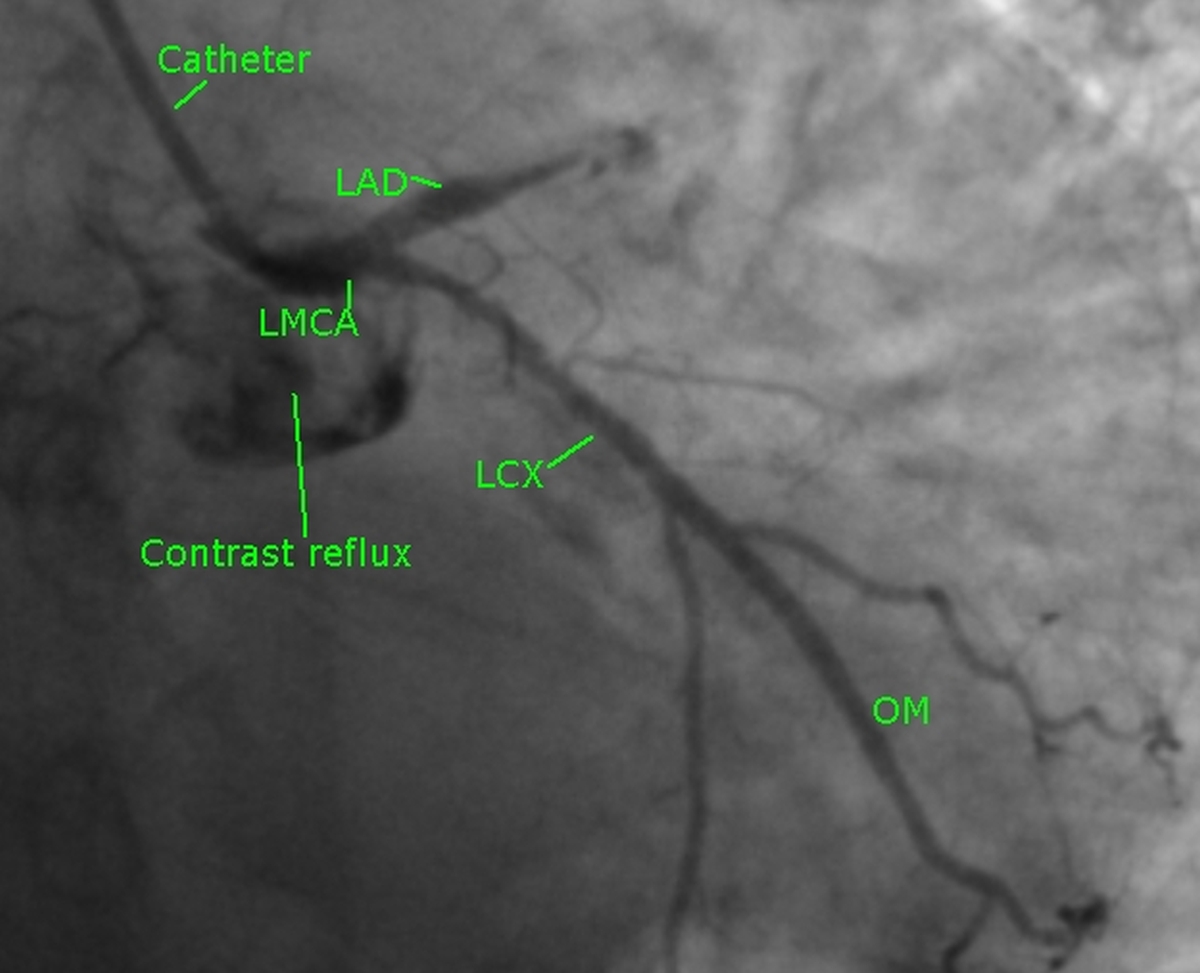LAD total occlusion – coronary angiogram
LAD total occlusion – coronary angiogram
 Left coronary angiogram showing a tapering proximal total occlusion of left anterior descending coronary artery. Left circumflex has non flow limiting plaques in the proximal region. Distally it continues as a major obtuse marginal branch, which is free from significant disease. Reflux of contrast into the left sinus of Valsalva is seen, indicating that there is no wedging in the left main coronary artery of the catheter.
Left coronary angiogram showing a tapering proximal total occlusion of left anterior descending coronary artery. Left circumflex has non flow limiting plaques in the proximal region. Distally it continues as a major obtuse marginal branch, which is free from significant disease. Reflux of contrast into the left sinus of Valsalva is seen, indicating that there is no wedging in the left main coronary artery of the catheter.
If the catheter is wedged in the LMCA, there will be damping of catheter tip pressure on the monitor and reflux of contrast will be absent. If this is noted, further contrast injection should be avoided and the catheter withdrawn till a good pressure tracing is obtained. Injection in a wedge position in the left main coronary artery can lead to ostial dissection and destabilization of the patient. This is a transradial angiogram using a Tiger catheter.
You may like this post on percutaneous transluminal coronary angioplasty (PTCA) and stenting of a total occlusion left anterior descending coronary artery (LAD). It has a video and multiple annotated still images for better comprehension. You may view the post by clicking the linked text above.
A total occlusion which has been there for at least one month is usually considered a chronic total occlusion. Opening up a CTO is often difficult and requires special guidewires, better operator experience and patience. Complication rates like dissection and perforation are more common with CTO interventions. Several special type of hardware are sometimes needed to cross CTO [1].
Reference
- Niizeki T, Ikeno E, Kubota I. A Case of Chronic Total Occlusion of the Left Anterior Descending Artery Successfully Treated with Side Branch Technique Using the Soutenir CV. Am J Case Rep. 2017 Jan 13;18:46-51.